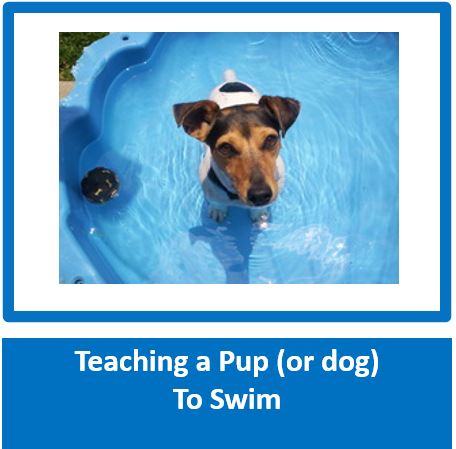|
Accidents happen so easily, and it is always better to have your dog in a Life Jacket when near a river, at the sea, or even around the family pool even if you dog is a good swimmer. Remember to take the breed into account as well - some breeds really battle with swimming, or can't access the steps of the pool. In addition to fabulous Outward Hound Life Jackets, we have some great toys to be used in water, and our Chillax range to cool your dogs off. . Please contact us if any questions. www.mcmac.co.za
|
Getting your dog used to wearing a Lifejacket
by Scotty Valadao - Canine Behaviourist - Friendsofthedog.co.za
by Scotty Valadao - Canine Behaviourist - Friendsofthedog.co.za
 Outward Hound® Granby Ripstop Life Jacket
Outward Hound® Granby Ripstop Life Jacket
Whether your dog is a good swimmer, wearing a Life Jacket around water can prevent so many unnecessary drownings - it is estimated that there are over 1000 dog drownings per annum.
Just like children, dogs that are swimming, or are around the pool, river, dam or sea, should be supervised and watched. If you have a pool, restrict access when not in use, and it is a good idea to leave in an appropriately sized life preserver floating as an additional precaution - but this does not guarantee safety.
If you are taking your dog with you to the sea, a dam or a river, then even more important that they have a Lifejacket on. Even strong swimmers can tire when swimming, the current or tide may be too strong, and in this situation, dogs tend to panic. If the water is cold, the dog could develop hypothermia.
Your first step should be to teach your dog how to swim, don't just presume that they know how - many breeds, especially the brachycephalic breeds, and those with large chests, just sink to the bottom while making the motions for swimming!
Teach your dog how to locate the steps or ramp and restrict access to the pool if you are not there to supervise. There are so many accidental drownings due to dogs not being able to find the way out, or being too small to stand on the top step or get out. It is a good idea, even if pool fenced, to have a floatation device always in the pool - this will not guarantee safety however. Just as we supervise children around a pool, so too should you supervise your dog.
How to get your dog used to the Life Jacket
Dogs, on average do not wear clothes, or even jackets in winter, and putting on something such as a Lifejacket will feel strange to your dog, especially when it is inflated. Rather get your dog used to it slowly and ensure he is comfy in it, and that it fits correctly. There are a lot more buckles and belts to be adjusted than a standard harness, and you want to ensure that your dog loves its Lifejacket
If your dog is used to wearing a harness, you may find the whole process of getting him used to the Lifejacket takes only a few minutes. We have given you a longer version of getting your dog used to it, and it really is worth while taking that extra time. Have a lot of high value, tasty treats to get you started.
This really sounds like a lot of work, but you will be surprised at how quickly dogs normally adapt, as long as we work at 'their' pace and don't rush them - bear in mind that this equipment could save your dog's life, so well worth the effort.
Just like children, dogs that are swimming, or are around the pool, river, dam or sea, should be supervised and watched. If you have a pool, restrict access when not in use, and it is a good idea to leave in an appropriately sized life preserver floating as an additional precaution - but this does not guarantee safety.
If you are taking your dog with you to the sea, a dam or a river, then even more important that they have a Lifejacket on. Even strong swimmers can tire when swimming, the current or tide may be too strong, and in this situation, dogs tend to panic. If the water is cold, the dog could develop hypothermia.
Your first step should be to teach your dog how to swim, don't just presume that they know how - many breeds, especially the brachycephalic breeds, and those with large chests, just sink to the bottom while making the motions for swimming!
Teach your dog how to locate the steps or ramp and restrict access to the pool if you are not there to supervise. There are so many accidental drownings due to dogs not being able to find the way out, or being too small to stand on the top step or get out. It is a good idea, even if pool fenced, to have a floatation device always in the pool - this will not guarantee safety however. Just as we supervise children around a pool, so too should you supervise your dog.
How to get your dog used to the Life Jacket
Dogs, on average do not wear clothes, or even jackets in winter, and putting on something such as a Lifejacket will feel strange to your dog, especially when it is inflated. Rather get your dog used to it slowly and ensure he is comfy in it, and that it fits correctly. There are a lot more buckles and belts to be adjusted than a standard harness, and you want to ensure that your dog loves its Lifejacket
If your dog is used to wearing a harness, you may find the whole process of getting him used to the Lifejacket takes only a few minutes. We have given you a longer version of getting your dog used to it, and it really is worth while taking that extra time. Have a lot of high value, tasty treats to get you started.
- Show your dog vest and let him smell it - praise and treat. We find it is a good idea to pair a cue such as 'vest' at the same time. Do this several times until your dog looks happy and is anticipating the praise and treat.
- Hold the vest up by the handle with all the straps undone and luring him with a treat, lure him to walk into it, with his head through the opening and that resting on his back. Do this several times, and as above, don't go further until the dog is happily complying and looking forward to his treats and praise. Don't just plop it over his head!
- Once your dog is happily doing this, start to pair the praise and treats with doing up the various buckles - do one buckle at a time, remember to praise and treat.
- Take the vest off, have a bit of a break and repeat a few times until you are absolutely sure your dog is happy with the procedure.
- Next step is to keep the vest on for about 10 minutes at a time, and in addition to praising, you can play some games with him - the association is that really good things happen when the Lifejacket is on.
- Our next step is to introduce the dog to the water with the Lifejacket on. Remember that this is going to feel a lot different to your dog, so luring and praising, with the jacket on, get him to walk along the top step.
- Now, either tell him to 'go swim' calling him back after a few feet as a safeguard and praising and treating, or lure him into the water - if you can get in with him, even better. You want to keep the distance short, calling him back to you often until you are satisfied that he is totally happy.
This really sounds like a lot of work, but you will be surprised at how quickly dogs normally adapt, as long as we work at 'their' pace and don't rush them - bear in mind that this equipment could save your dog's life, so well worth the effort.





